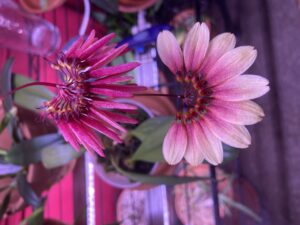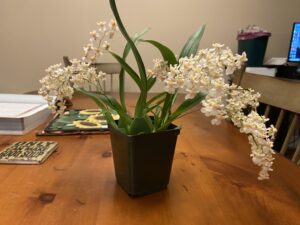Growing Orchids in WNC
go.ncsu.edu/readext?952545
en Español / em Português
El inglés es el idioma de control de esta página. En la medida en que haya algún conflicto entre la traducción al inglés y la traducción, el inglés prevalece.
Al hacer clic en el enlace de traducción se activa un servicio de traducción gratuito para convertir la página al español. Al igual que con cualquier traducción por Internet, la conversión no es sensible al contexto y puede que no traduzca el texto en su significado original. NC State Extension no garantiza la exactitud del texto traducido. Por favor, tenga en cuenta que algunas aplicaciones y/o servicios pueden no funcionar como se espera cuando se traducen.
Português
Inglês é o idioma de controle desta página. Na medida que haja algum conflito entre o texto original em Inglês e a tradução, o Inglês prevalece.
Ao clicar no link de tradução, um serviço gratuito de tradução será ativado para converter a página para o Português. Como em qualquer tradução pela internet, a conversão não é sensivel ao contexto e pode não ocorrer a tradução para o significado orginal. O serviço de Extensão da Carolina do Norte (NC State Extension) não garante a exatidão do texto traduzido. Por favor, observe que algumas funções ou serviços podem não funcionar como esperado após a tradução.
English
English is the controlling language of this page. To the extent there is any conflict between the English text and the translation, English controls.
Clicking on the translation link activates a free translation service to convert the page to Spanish. As with any Internet translation, the conversion is not context-sensitive and may not translate the text to its original meaning. NC State Extension does not guarantee the accuracy of the translated text. Please note that some applications and/or services may not function as expected when translated.
Collapse ▲Bulbophyllum is a genus in the family Orchidaceae. It is considered the largest and most diverse genus in the orchid family. These plants are epiphytes and lithophytes in nature. Meaning that they don’t grow in soil but rather on a tree or on rocks. Characterized by short plump pseudobulbs and usually one oblong leaf atop the pseudobulb. Thin shallow roots covered with a thin tissue called velamen.
Listen to Assistant County Agent Isaac Wyatt discuss orchids on the Gardening in the Mountains Radio Show and Podcast:
These plants also have very interesting flower morphology. The flowers of the genus have a hinged labellum that is free moving. Often seen rocking in the wind. The hinged labellum has evolved to aid the orchid in pollination. When a pollinator lands on the labellum it “throws” the pollinator into the column of the orchid. Detaching the pollinia onto the pollinator. The pollinator will visit another flower and get thrown into its column achieving pollination.
These plants are also known for being extremely “fragrant”. Looking at Bulb. phalaenopsis the flower itself looks a lot like meat (figure 1). If you were in the presence of this flower, you would also smell a scent much like rotting meat. This is because many bulbophyllums are often pollinated by a fly. These orchids are also relatively easy to grow in your home.
Orchids are easy plants to grow in your home. With just a few simple tips you could have an orchid collection of your dreams. Below are just some extra photos of some orchids in my personal collection and a bit about them.








